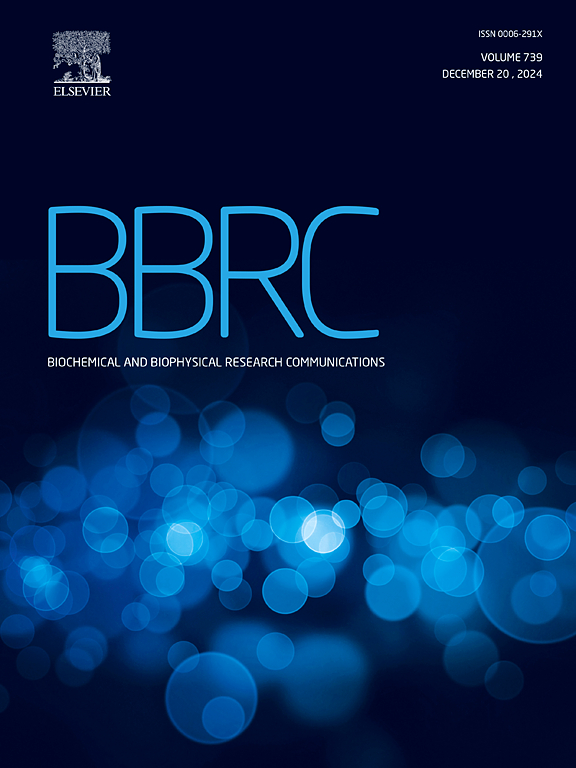培西达替尼在临床相关浓度下损害肝脏线粒体功能,导致原代人肝细胞死亡
IF 2.5
3区 生物学
Q3 BIOCHEMISTRY & MOLECULAR BIOLOGY
Biochemical and biophysical research communications
Pub Date : 2025-05-22
DOI:10.1016/j.bbrc.2025.152075
引用次数: 0
摘要
培西达替尼是一种监管机构批准的小分子激酶抑制剂(KI),具有肝毒性的黑框警告,FDA要求风险评估和缓解策略(REMS)来减轻这种风险。培西达替尼肝毒性的机制尚不清楚。由于线粒体损伤和肝细胞毒性被认为是许多KIs诱导的肝毒性的共同机制,在这里,我们研究了培西达替尼的这种责任。新鲜分离的大鼠肝脏线粒体、亚线粒体部分和冷冻保存的原代人肝细胞(PHHs)——药物肝毒性体外模型的金标准——用临床相关浓度的培西达替尼处理,并评估线粒体功能和细胞毒性。在分离的线粒体中,培西达替尼降低了谷氨酸/苹果酸和琥珀酸驱动呼吸的状态3耗氧率,而状态4耗氧率不受影响。在亚线粒体组分中,培西达替尼显著抑制呼吸链复合体(RCC) I和V的活性,但不抑制II、III、IV的活性。在phh中,通过海马系统测量,在没有细胞死亡的情况下,培西达替尼在2小时内降低基础呼吸、空闲呼吸、最大呼吸和三磷酸腺苷(ATP)相关呼吸。培西达替尼还抑制了细胞ATP水平,增加了活性氧,并在24 h后导致细胞死亡。但caspases的活性未受影响。重要的是,上述有害影响发生在培西达替尼浓度为推荐治疗剂量下人血药峰值浓度(Cmax)的0.5- 2.5倍时。这些数据表明,线粒体损伤和肝细胞毒性参与了培西达替尼诱导的肝毒性机制。本文章由计算机程序翻译,如有差异,请以英文原文为准。
Pexidartinib impairs liver mitochondrial functions causing cell death in primary human hepatocytes at clinically relevant concentrations
Pexidartinib is a regulatory agency approved small molecule kinase inhibitor (KI) with a boxed warning for hepatotoxicity, and FDA requires a Risk Evaluation and Mitigation Strategy (REMS) to mitigate such risk. The mechanism of pexidartinib hepatotoxicity is poorly understood. As mitochondrial injury and hepatocyte toxicity have been proposed to be a shared mechanism for the hepatotoxicity induced by many KIs, here we examined pexidartinib for such liabilities. Freshly isolated rat liver mitochondria, submitochondrial fractions, and cryopreserved primary human hepatocytes (PHHs) – the gold standard in vitro model for drug hepatotoxicity – were treated with pexidartinib at clinically relevant concentrations, and mitochondrial functions and cytotoxicity were assessed. In isolated mitochondria, the state 3 oxygen consumption rates of glutamate/malate- and succinate-driven respiration were both decreased by pexidartinib, while the state 4 oxygen consumption rates were unaffected. In submitochondrial fractions, the activities of respiratory chain complex (RCC) I and V, but not II, III, IV, were significantly inhibited by pexidartinib. In PHHs, as measured by a Seahorse system, pexidartinib decreased basal, spare, maximal, and adenosine triphosphate (ATP)-linked respirations at 2 h in the absence of cell death. Pexidartinib also inhibited cellular ATP level, increased reactive oxygen species, and caused cell death after 24 h. However, activities of caspases were unaffected. Importantly, the detrimental effects noted above occurred at pexidartinib concentrations of 0.5- to 2.5-fold of the human peak blood concentration (Cmax) achieved with the recommended therapeutic dose. These data suggest that mitochondrial injury and hepatocyte toxicity are involved in the mechanism of pexidartinib-induced hepatotoxicity.
求助全文
通过发布文献求助,成功后即可免费获取论文全文。
去求助
来源期刊
CiteScore
6.10
自引率
0.00%
发文量
1400
审稿时长
14 days
期刊介绍:
Biochemical and Biophysical Research Communications is the premier international journal devoted to the very rapid dissemination of timely and significant experimental results in diverse fields of biological research. The development of the "Breakthroughs and Views" section brings the minireview format to the journal, and issues often contain collections of special interest manuscripts. BBRC is published weekly (52 issues/year).Research Areas now include: Biochemistry; biophysics; cell biology; developmental biology; immunology
; molecular biology; neurobiology; plant biology and proteomics

 求助内容:
求助内容: 应助结果提醒方式:
应助结果提醒方式:


